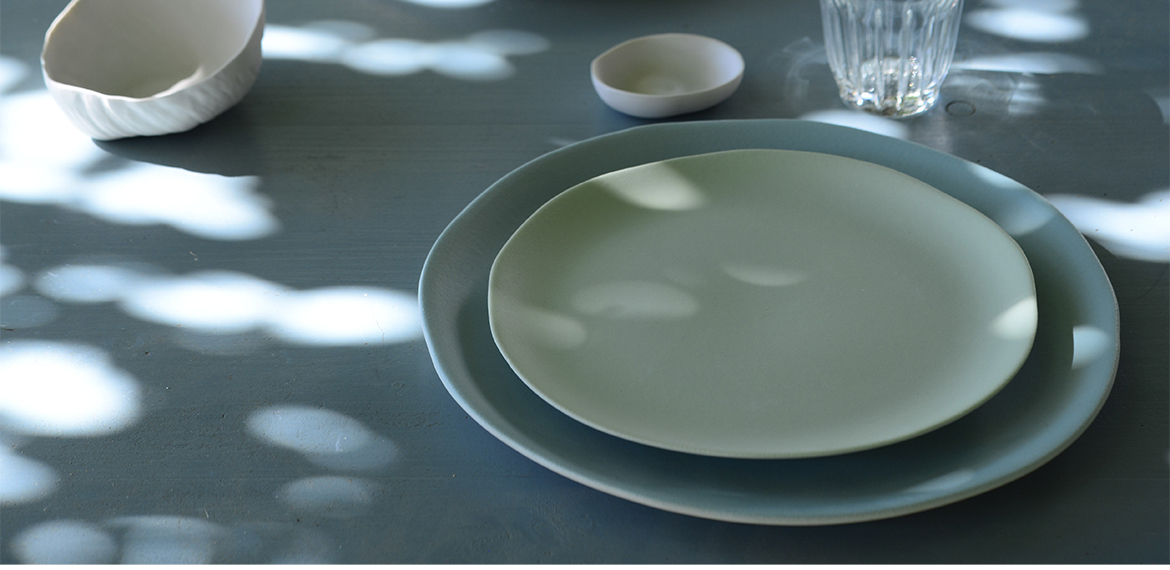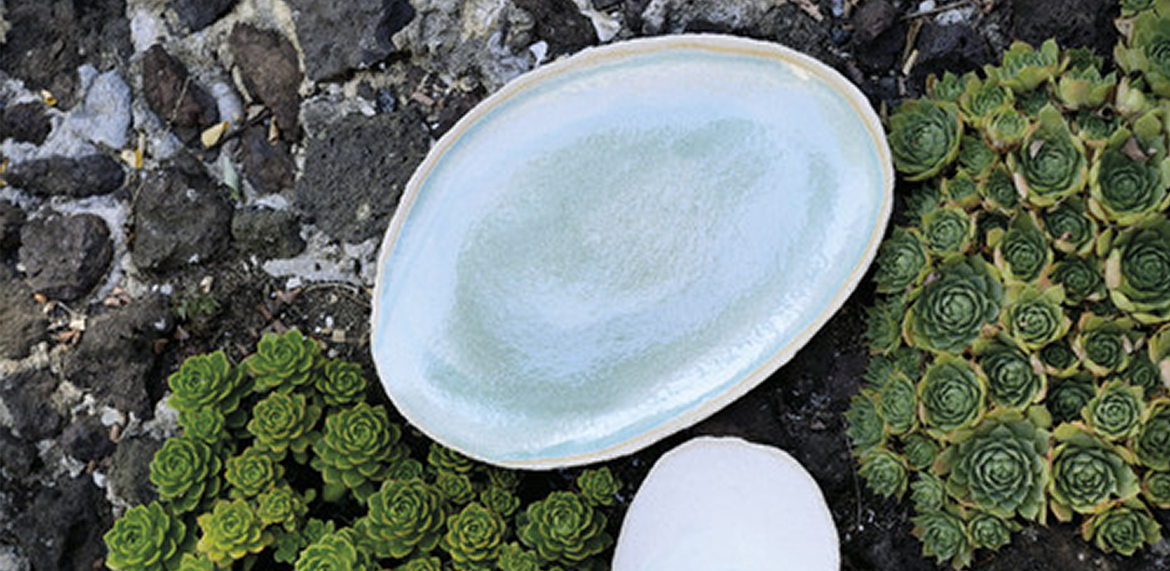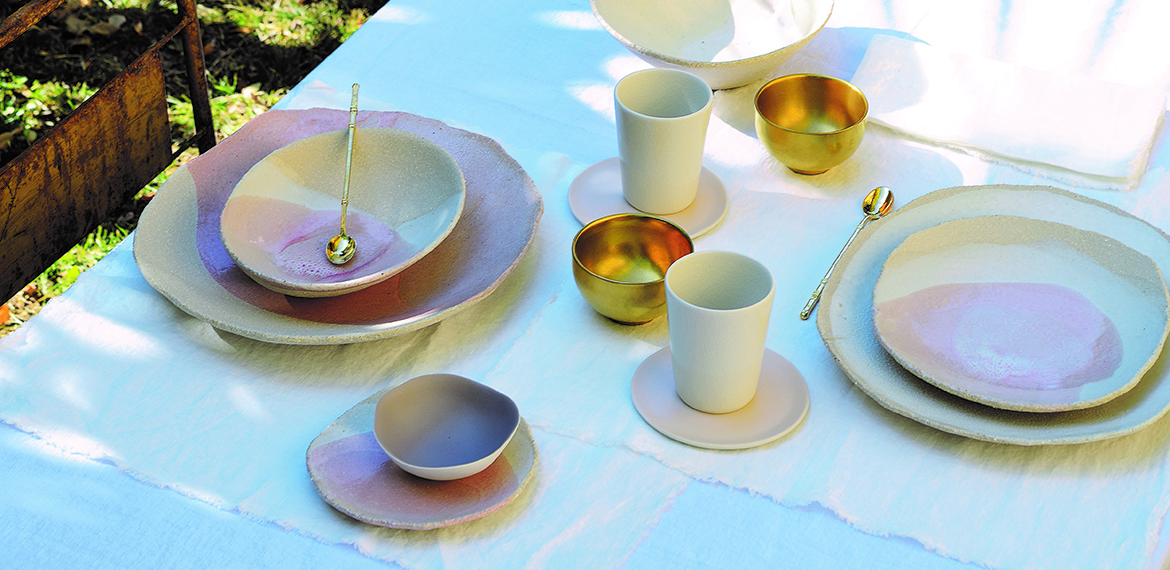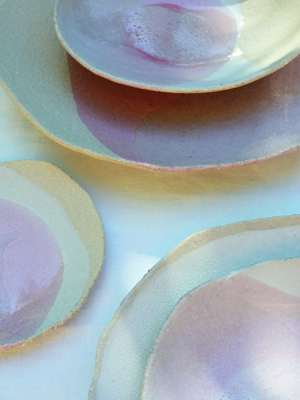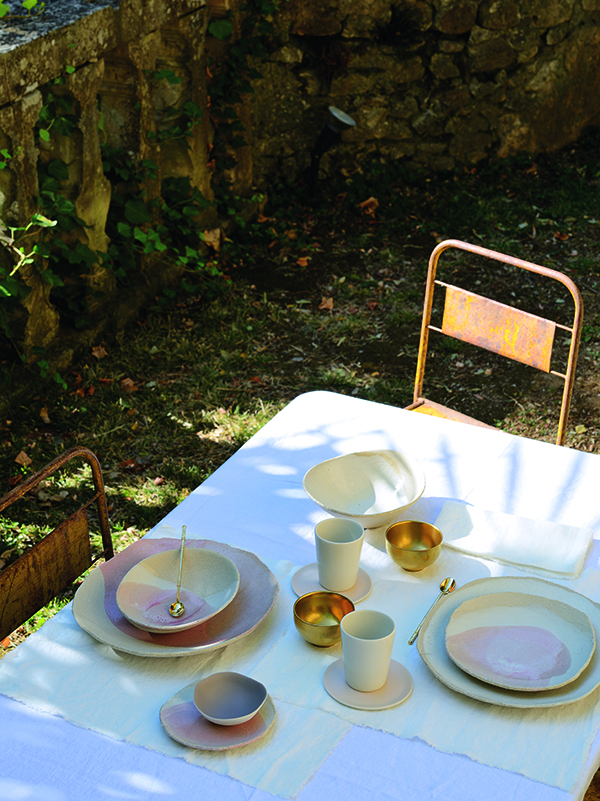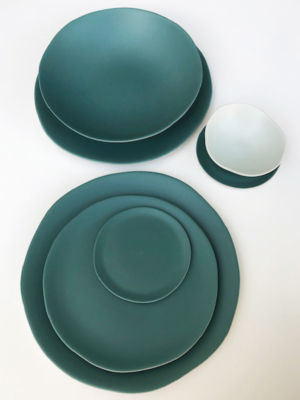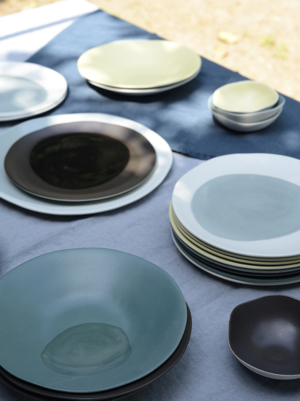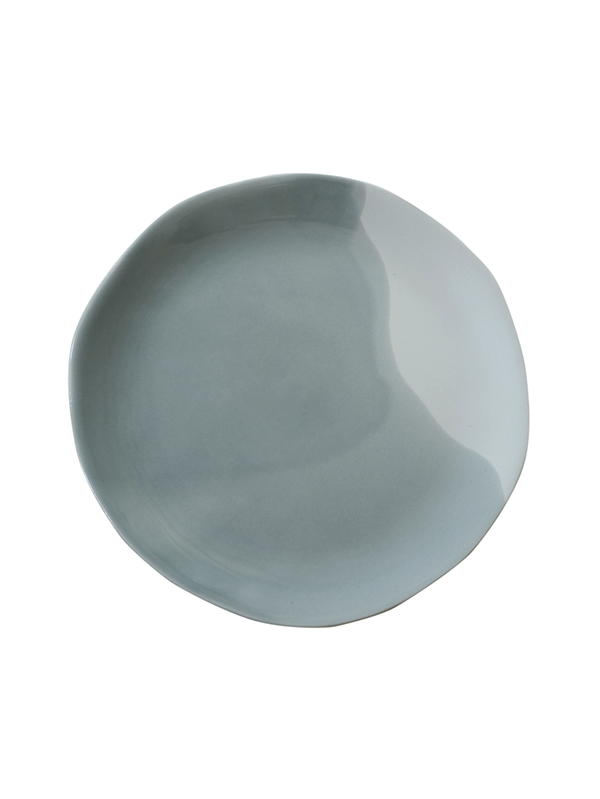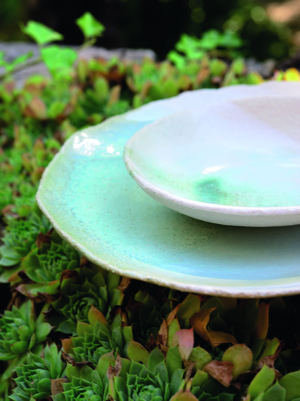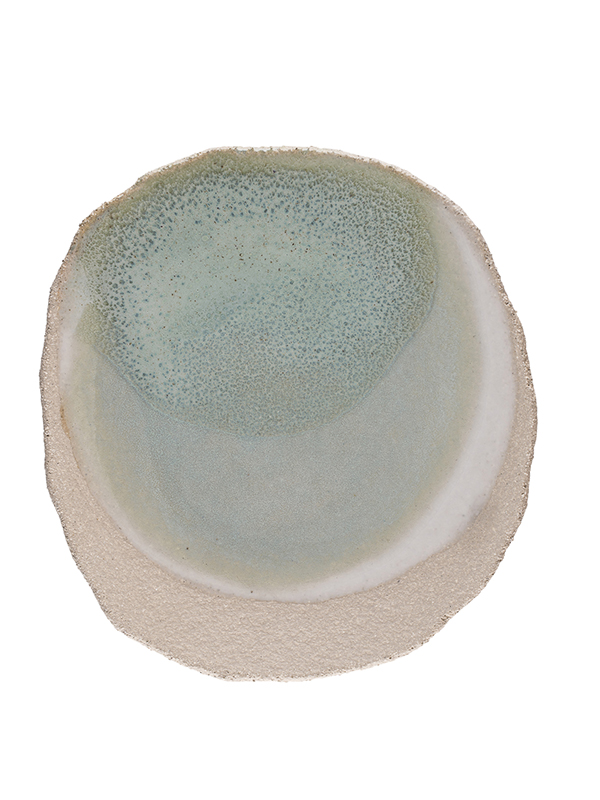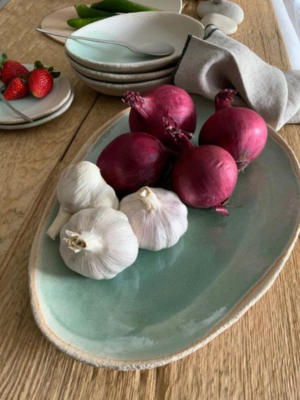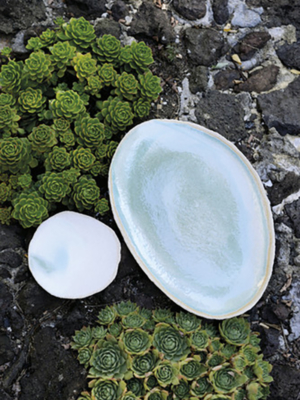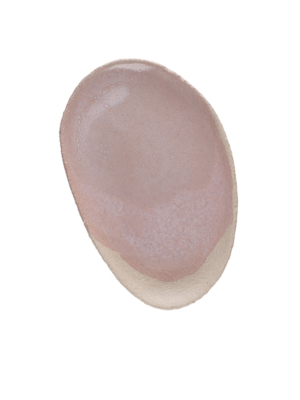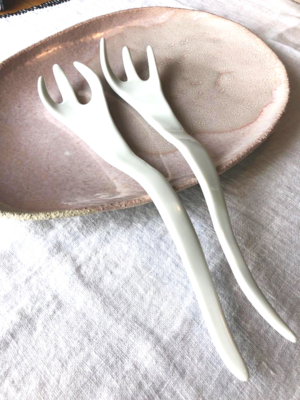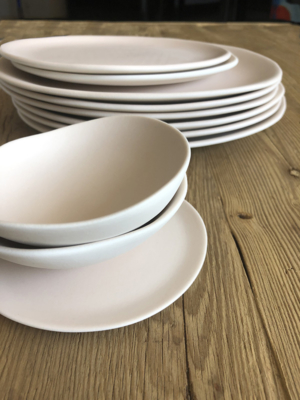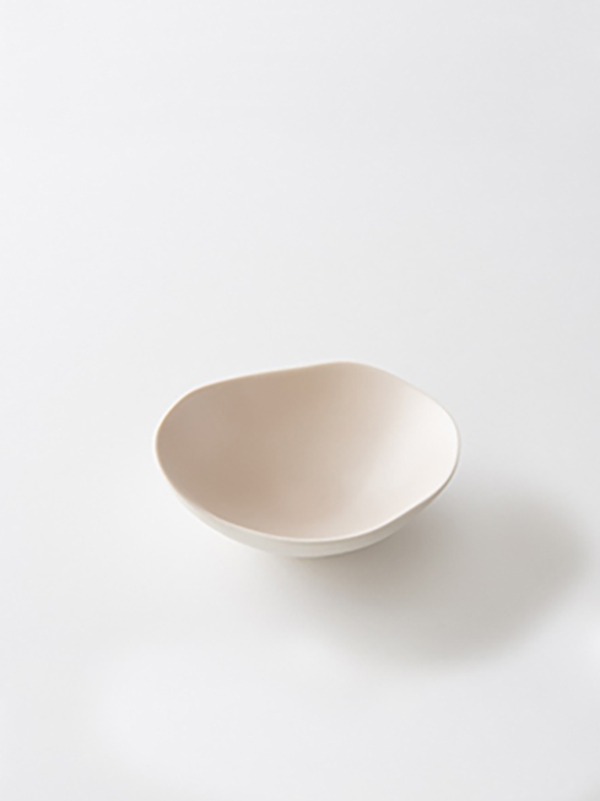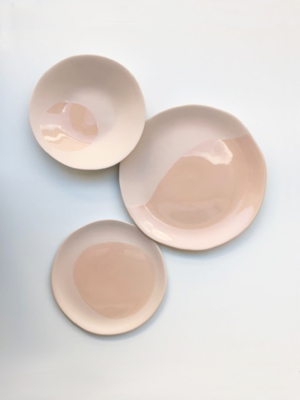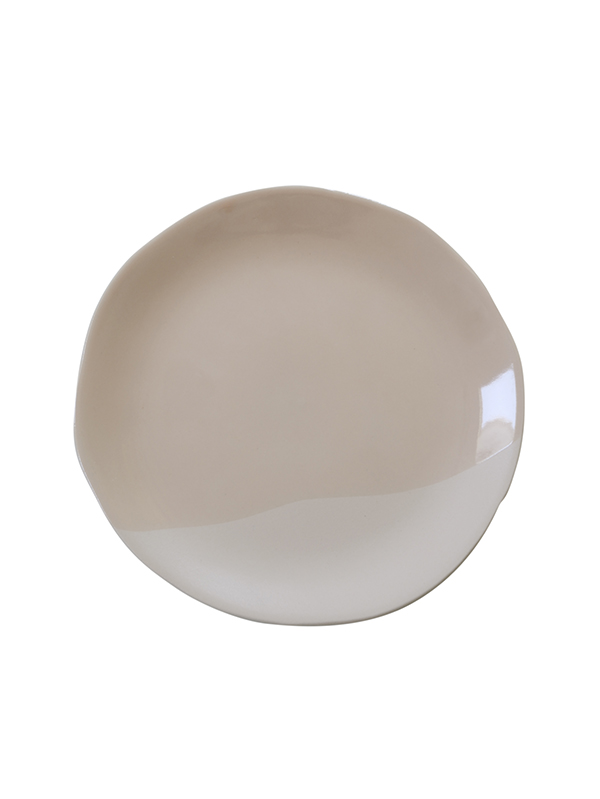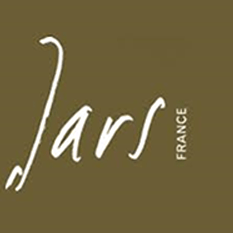
Since 1857
From its roots in horticultural pottery through to today’s much sought-after contemporary tableware collections in glazed stoneware, Jars’ history spans more than a 150 years…
Since it was founded by Pierre Jars, the traditional craft of potters’ skills passed down the generations still lives on today with the related making secrets of their forebears being closely guarded.
This rich skills resource has earned Jars EPV status (Entreprise Francais e du Patrimoine Vivant (French Companies of Living Heritage).
Ecology
We like nature for its simplicity, its continuing renewed source of inspiration.
This is why, in a small way but with conviction, we commit in all our work areas to choices that care for the environment, for example:
We recycle water and china clay mixes.
We recycle exhaust heat from the kilns to use in the biscuit dryers.
The luxury of time
A nice object crosses the time and resists it. At first, through its natural and strong material. But also, and mainly because it required time and patience to be shaped. Subtle and precise gestures. Exigency to the hidden details.
Material
During this ‘grand feu’ firing at 2850F, the clays that make up its refined body become vitrified (the state at which the china and glaze melts and fuses together to form non-porous ware) and allows stoneware to reach the status of ‘noble ceramic”.
We could list all the reasons why stoneware gets this distinction but this would be long but it is unique to Jars. It is certainly the most resistant and the most natural ceramic material.
Thanks to this high fire and vitrification process stoneware recalls how rock was formed some millions of years ago with the trilogy of “earth, water and fire”.
As if it was a living thing stoneware comes from nature and is returned to it.
Hand made
At Jars all our making, glazing, finishing and handling, and know-how of the material and even its hazards are the basics of a long learning process. Our hand-made skills are evident throughout:
In making a perfectly refined clay mix.
In casting the pieces.
In sponging and fettling edges and rims.
In applying the colored glaze.
In stacking ware in the kilns and taking it out.
For sorting by touch, feel and sight to control quality.
So many of these workshop secrets are proudly shared between one ceramicist to another.
-
Around The Table, Brands & Designers, Dinnerware collection, Gifts, Holiday gifts, Holiday Table, Home page category, Jars, Plates, Plates, bowls & dishes, Popup shop, Summer table, Tableware
Set of 6 Ceramic stoneware Plates Wabi – Pink
₪878 – ₪1,545Designer: Jars Céramistes
These sublime plates are inspired by the Japanese philosophy Wabi Sabi. Along with advocating the return to simplicity, the philosophy yearns for a beauty of the imperfect nature. Indeed the sobriety, the authenticity of the material contrast with the subtlety of colored enamels. In addition these noble ceramics are made of sandstone and provide the strongest and the most natural ceramic. Each piece is entirely handmade and unique.
Perfect for every day meals as well as for the most sophisticated and refined dining.
-
Around The Table, Brands & Designers, Dinnerware collection, Gifts, Hand Made Craftsmanship, Holiday gifts, Jars, Plates, Plates, bowls & dishes, Summer table, Tableware
Set of 6 Ceramic plates Jardin de Maguelone
₪390 – ₪839Designer: Jars Céramistes
Jardin de Maguelone plates have irregular edges, white bottom contrasting with a subtle and mate colored top. These noble ceramics are made of sandstone, which is the strongest and the most natural ceramic. Each piece is entirely handmade and unique.
The powdered touch will even soften with time and use. -
Around The Table, Brands & Designers, Dinnerware collection, Gifts, Holiday gifts, Holiday Table, Home page category, Jars, Plates, Plates, bowls & dishes, Summer table, Tableware
Set of 6 Ceramic plates Reflet de Maguelone-Rosemary
₪806 – ₪865Designer: Jars Céramistes
Reflet de Maguelone plates have irregular edges and are beautifully pastel colored.As a result of use and time the powdered touch will even soften. These noble ceramics are made of sandstone, which is indeed the strongest and the most natural ceramic. Each piece is entirely handmade and unique.
Perfect for every day meals as well as for the most sophisticated and refined dining.
-
Around The Table, Brands & Designers, Dinnerware collection, Gifts, Holiday gifts, Holiday Table, Jars, Plates, Plates, bowls & dishes, Summer table, Tableware
Set of 6 Ceramic Stoneware Plates Wabi Green
₪878 – ₪1,545Designer: Jars Céramistes
These sublime plates are inspired by the Japanese philosophy Wabi Sabi. Along with advocating the return to simplicity, the philosophy yearns for a beauty of the imperfect nature. The sobriety, the authenticity of the material contrast with the subtlety of colored enamels. In addition these noble ceramics are made of sandstone and provide the strongest and the most natural ceramic. Each piece is entirely handmade and unique.
Perfect for every day meals as well as for the most sophisticated and refined dining.
-
Around The Table, Bowls and dishes, Brands & Designers, For Passover/Hanoukka, Gifts, Holiday gifts, Jars, Plates, bowls & dishes, Serveware, Summer table, Tableware, Trays and display dishes
Ceramic Serving Dish Wabi Green
₪286Designer: Jars Céramistes
These sublime dishes are inspired by the Japanese philosophy Wabi Sabi which advocates the return to simplicity, the beauty of the imperfect things that nature offers us. the sobriety, the authenticity of the material contrast with the subtilty of nuances and the game of colored enamels. These noble ceramics are made of sandstone, which is the strongest and the most natural ceramic. Each piece is entirely handmade and unique.
Perfect for every day meals as well as for the most sophisticated and refined dining.
Crafted by the French ceramist Jars whose know-how has passed down from generation to generation and has been closely guarded since 1857. Its rich expertise has earned Jars EPV status (French Companies of Living Heritage).
Length: 36 cm
Width: 25 cmHand made in France
Stoneware
100 % Natural
Single fire at 1285 ° C
Non porous
Without Lead ; Without CadmiumDishwasher and microwave oven safe.
-
Around The Table, Bowls and dishes, Brands & Designers, For Passover/Hanoukka, Gifts, Holiday gifts, Jars, Plates, bowls & dishes, Serveware, Summer table, Tableware, Trays and display dishes
Ceramic Serving Dish Wabi pink
₪286Designer: Jars Céramistes
These sublime dishes are inspired by the Japanese philosophy Wabi Sabi which advocates the return to simplicity, the beauty of the imperfect things that nature offers us. the sobriety, the authenticity of the material contrast with the subtilty of nuances and the game of colored enamels. These noble ceramics are made of sandstone, which is the strongest and the most natural ceramic. Each piece is entirely handmade and unique.
Perfect for every day meals as well as for the most sophisticated and refined dining.
Crafted by the French ceramist Jars whose know-how has passed down from generation to generation and has been closely guarded since 1857. Its rich expertise has earned Jars EPV status (French Companies of Living Heritage).
Length: 36 cm
Width: 25 cmHand made in France
Stoneware
100 % Natural
Single fire at 1285 ° C
Non porous
Without Lead ; Without CadmiumDishwasher and microwave oven safe.
-
Around The Table, Brands & Designers, Dinnerware collection, Gifts, Hand Made Craftsmanship, Holiday gifts, Holiday Table, Jars, Plates, Plates, bowls & dishes, Popup shop, Summer table, Tableware
Set of 6 Ceramic plates Jardin de Maguelone-Blush
₪390 – ₪839Designer: Jars Céramistes
Jardin de Maguelone plates have irregular edges, white bottom contrasting with a subtle and mate colored top. These noble ceramics are made of sandstone, which is the strongest and the most natural ceramic. Each piece is entirely handmade and unique.
The powdered touch will even soften with time and use. -
Around The Table, Brands & Designers, Dinnerware collection, Gifts, Holiday gifts, Holiday Table, Home page category, Jars, Plates, Plates, bowls & dishes, Popup shop, Summer table, Tableware
Set of 6 Ceramic Plates – Reflet de Maguelone-Blush
₪806 – ₪865Designer: Jars Céramistes
Reflet de Maguelone plates have irregular edges and are beautifully pastel colored.
As a result of use and time the powdered touch will even soften.
These noble ceramics are made of sandstone, which is indeed the strongest and the most natural ceramic. Each piece is entirely handmade and unique.
Perfect for every day meals as well as for the most sophisticated and refined dining.



